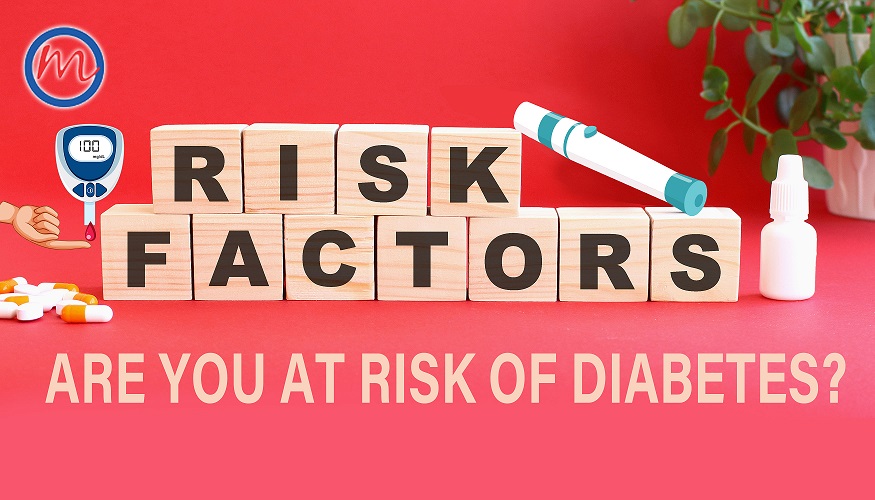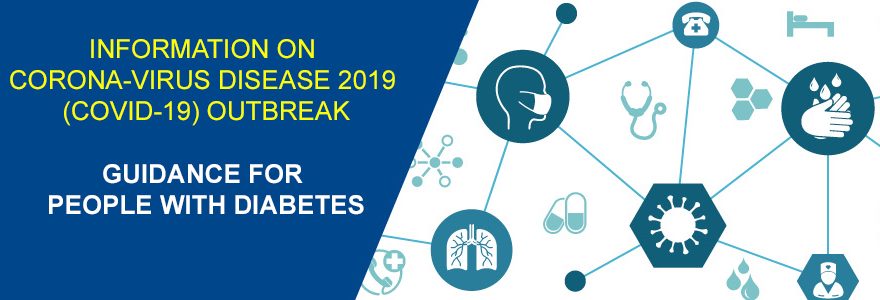Keep an eye out for all the factors that may increase your risk of type 2 diabetes.
By Team Dr Mohan’s
A disease is often like a jigsaw puzzle, with many interlocking parts and pieces. To tame it, every piece has to fit in: why it happens, how it happens, who it happens to and so on. And if you take out one piece the whole puzzle may be lost. These puzzle pieces are essentially the risk factors of a disease—the conditions that indicate that a disease is setting in. Hence, knowing the risk factors provide greater insight into what we can do to improve prevention efforts.
DIABETES PUZZLE
Although diabetes is one of the most ancient diseases of mankind, it continues to remain a puzzle even today. Medical researchers, however, hold some of the key pieces of the puzzle. They can treat the symptoms and fight its complications, but it is still unclear what exactly causes diabetes. It is also open to question why certain people are at higher risk. Or why it is still incurable, albeit manageable.
INDIANS AT RISK
There are two things about diabetes that are now accepted: first, there is strong evidence that Indians have a greater degree of insulin resistance and a stronger genetic predisposition to diabetes. The reasons are not clear and research is ongoing. In general, it seems, race or ethnicity plays some role. Certain people—including Black, Hispanic, Asian Indian—are at higher risk.
BEING A MAN
Men may be more likely to develop type 2 diabetes than women. Researchers have discovered that men seem to develop type 2 diabetes at a lower Body Mass Index than women of a similar age. The proposed reasons are that men may be less sensitive to insulin than women or tend to store fat around their organs rather than under the skin as women do.
THE WEIGHT FACTOR
Being overweight (having a Body Mass Index of 30 or greater) puts you at greater risk of diabetes. It matters where exactly you accumulate your fat. If you store fat mainly in the abdomen, you have a greater risk of type 2 diabetes than if you store fat elsewhere, such as in your hips and thighs. Your risk of type 2 diabetes rises if you are a man with a waist circumference above 36 inches (90) or a woman with a waist that’s greater than 31.5 inches (80). Studies suggest that the more excess weight you have, especially abdominal fat, the more resistant your liver, muscle and tissue cells are to the insulin hormone. This is known as insulin resistance – the hallmark of type 2 diabetes. Implication of this ? You can cut your risk of developing type 2 diabetes by losing weight.
ARE YOU ACTIVE?
The benefits of physical activity cannot be overstated. In fact, the less active you are, the greater your risk of type 2 diabetes. Many studies underscore how physical activity and exercise help control weight, uses up glucose as energy and make our cells more sensitive to insulin. For instance, exercise has been found to have lower HbA1c value in people with diabetes. (HbA1c test measures the amount of glycosylated hemoglobin or glucose coating around your hemoglobin the blood to indicate how well a person’s diabetes is being controlled over time.) People with diabetes have also been found to have a lower risk of developing heart disease when they walk for at least two and a half an hour (150 minutes) a week. Such benefits persist even with confounding factors, including BMI, smoking, and other heart disease risk factors.
FAMILY HISTORY
Family history of type 2 diabetes is recognized as an important risk factor of the disease. The risk of type 2 diabetes increases if your parent or sibling has type 2 diabetes. In fact, the risk of type 2 diabetes can go up two to six times for them, compared with people with no family history of the disease. The causes of type 2 diabetes are complex: family medical history provides valuable genomic information because it represents the combination of inherited genetic susceptibilities and shared environmental and behavioural factors. The use of family history as part of a comprehensive risk assessment for an individual can be crucial in the prevention, early detection, and treatment of type 2 diabetes.
HOW OLD ARE YOU?
Age is one of the most important risk factors for type 2 diabetes and the burden of the disease is very high in older age groups. In fact, diabetes is a progressive disease. Glucose levels are known to increase with age. And so does the risk of type 2 diabetes as you get older, especially after age 45. Part of the reason is that, people tend to exercise less, lose muscle mass and gain weight as they age. There is, however, also evidence that diabetes in the elderly may result from an age-related decline in beta cell function. Beta cells are cells found in the pancreas that make the insulin hormone, responsible for controlling the level of glucose in the blood. It is believed that the impaired secretion of insulin from beta cells leads to diabetes in elderly adults.
PREDIABETES FIRST
Prediabetes is a risk factor for diabetes. It is a condition in which your blood sugar level is higher than normal, but not high enough to be classified as diabetes. Left untreated, prediabetes often progresses to type 2 diabetes. In fact, the complications associated with diabetes are present among people with undiagnosed prediabetes at higher rates than among people with normal glucose levels. Prediabetes is, however, a condition that can mostly be managed with lifestyle changes. With simple changes, such as weight loss, a healthier diet, and getting more active, you can dramatically lower your risk for type 2 diabetes, and improve your health and quality of life at the same time!
GESTATIONAL DIABETES
For women, developing diabetes during pregnancy puts one at greater risk of type 2 diabetes. If a baby weighs more than 9 pounds (4 kgs) at birth, the mother is also at risk of type 2 diabetes. New mothers are advised to get tested for diabetes six to 12 weeks after child birth, and to continue to get tested, at least, every two to three years even if found to be normal. They are at the risk of getting diabetes during their entire lifetime. Children of women who had gestational diabetes, are also at risk of getting diabetes. Early detection can help prevent diabetes complications.
POLYCYSTIC OVARIAN SYNDROME
Polycystic ovarian syndrome (PCOS) is a common condition characterised by irregular menstrual periods, excess hair growth and obesity. PCOS involves small cysts forming on the ovaries. These can impair ovulation and fertility. It is related to an imbalance of hormones, including the hormone insulin. A person with PCOS is more likely to have insulin resistance, typical in type 2 diabetes
SKIN TAGS
A range of skin conditions appear and can be early indicators. Research shows that there is an increased risk of diabetes in people who develop areas of darkened skin (called as acanthosis nigricans) usually in the armpits and neck, and/ or small growths on the skin that hang from stalks (skin tags). Medically harmless, these conditions often indicate insulin resistance. Reduced sensitivity of nerves and circulation, however, often make it harder to spot emerging skin problems.




